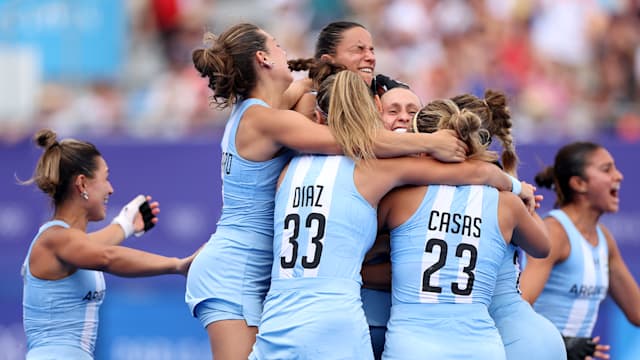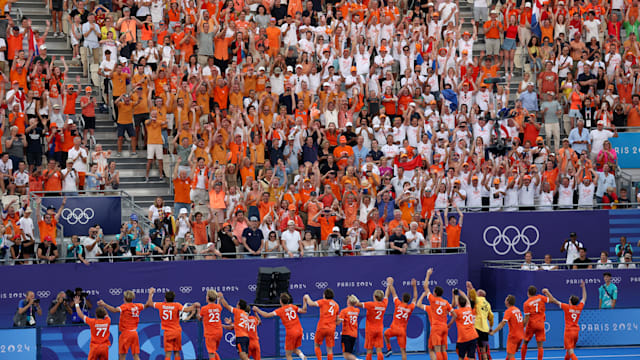
Hockey
Best of Paris 2024
News
1/2
HOCKEY - SPORT EXPLAINER PRESENTED BY ALLIANZ
Hockey
Hockey takes its name from the French word “hocquet”, meaning a shepherd’s crook in reference to the curved shape of a hockey stick. The roots of the game stretch back to antiquity, as records show an early form of the sport practised 4,000 years ago in Egypt, with variations played in what is now Ethiopia (1000 BC) and Iran (2000 BC).
Various museums report that a form of the game was also played by the Romans and Greeks, as well as the Aztecs.
Modern hockey emerged in England in the mid-19th century and was developed at private schools (like Eton) throughout the country. A hockey association was formed in the country in 1875, but dissolved after seven years; in 1886 the Hockey Association was created in England and worked to establish the first set of rules for the game.
Gender balance is a core value of hockey: of the 30 million players in the world, 51 per cent are women and 49 per cent are men.
Discover the men's Hockey schedule
Discover the women's Hockey schedule
Brief overview of the rules
Speed, technical skills and fun are the main characteristics of hockey—an exciting and dynamic sport that requires endurance and great coordination. A hockey match consists of four periods of 15 minutes for a total match time of 60 minutes.
Each team consists of eleven players, usually aligned as follows: goalkeeper, right fullback, left fullback, three half-backs and five forwards. Each player can be substituted at any time and as often as desired. A team can choose to play without a goalkeeper (temporarily, in principle). The team that scores the most goals wins. In Olympic pool play, if the score is tied at the end of the match, a tied result stands. In knockout matches at the Games, if the score is tied after regulation play, the winner is decided via penalty shoot-out.
In its early form, field hockey was played on natural grass, but the heavy turf made the game slower. The decision to move to synthetic turf modernised the game, making it quicker. The pitch is also watered, which means the ball travels at an even faster pace.
Athletes use a hook-shaped stick, with which they drive, control, and hit a hard ball. Only the flat side of the stick can be used. The convex side is not allowed. Except for goalkeepers, players are not allowed to touch the ball with their hands or feet.
A fault can lead the referee to inflict a green card (two-minute suspension), yellow (five-minute suspension) or red (ejection) to the player concerned. A hockey pitch is 91.40m long and 55m wide. The goals, located at each end, are surrounded by a D-shaped shooting area. Goals can only be scored from inside the opponent’s shooting area.
Olympic history
Hockey made its first appearance at the 1908 Games in London, before becoming a permanent fixture on the Olympic program from the 1928 Games onwards (hockey was absent from the Games in 1912 and 1924, though it was included at the 1920 Games in Antwerp.
The women’s game was introduced at the Moscow 1980 Olympic Games.
Given its contemporary Anglo-Saxon roots, modern hockey has been dominated by current and former members of the British Commonwealth, including India, Pakistan, Australia, New Zealand, South Africa and, of course, Great Britain. India and the Netherlands, in the men’s and women’s competitions, respectively, have been tremendously successful at the Olympic Games. India has won eight gold medals, including six consecutive between 1928 and 1956 – scoring 197 goals and conceding just eight in the process! The Netherlands has won nine total medals at the Games, including four golds (with their most recent one coming at the Tokyo 2020 Olympic Games). However, other nations – such as Argentina, Germany, Spain, France and reigning Olympic men’s champion Belgium – have now made their way into the top international rankings, making the sport truly global.

























